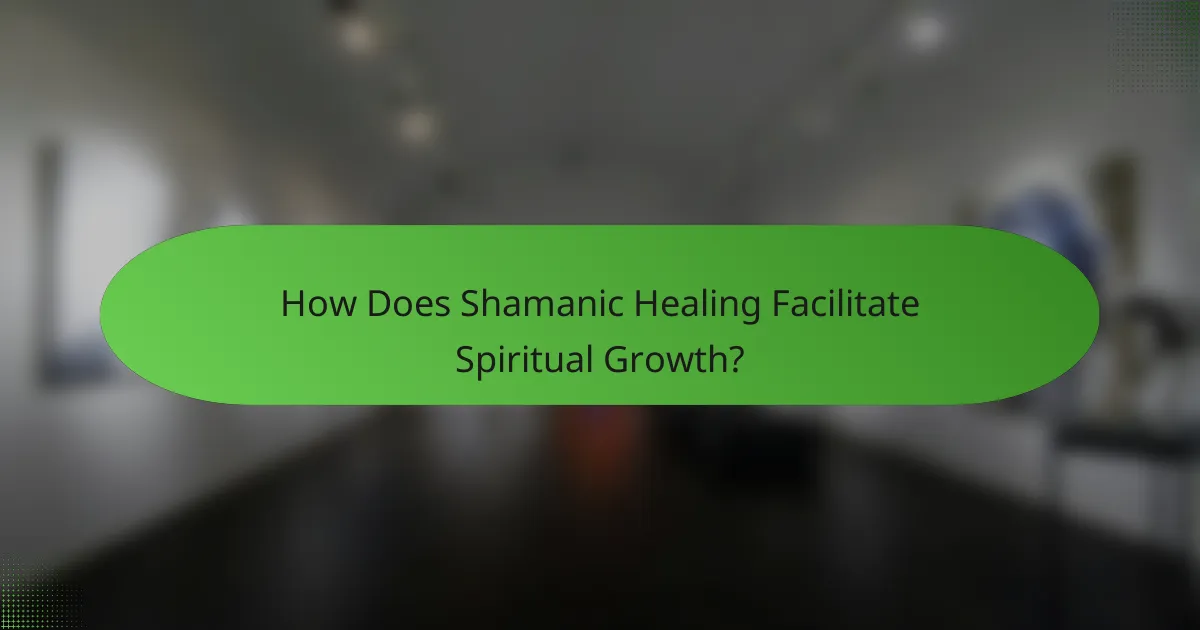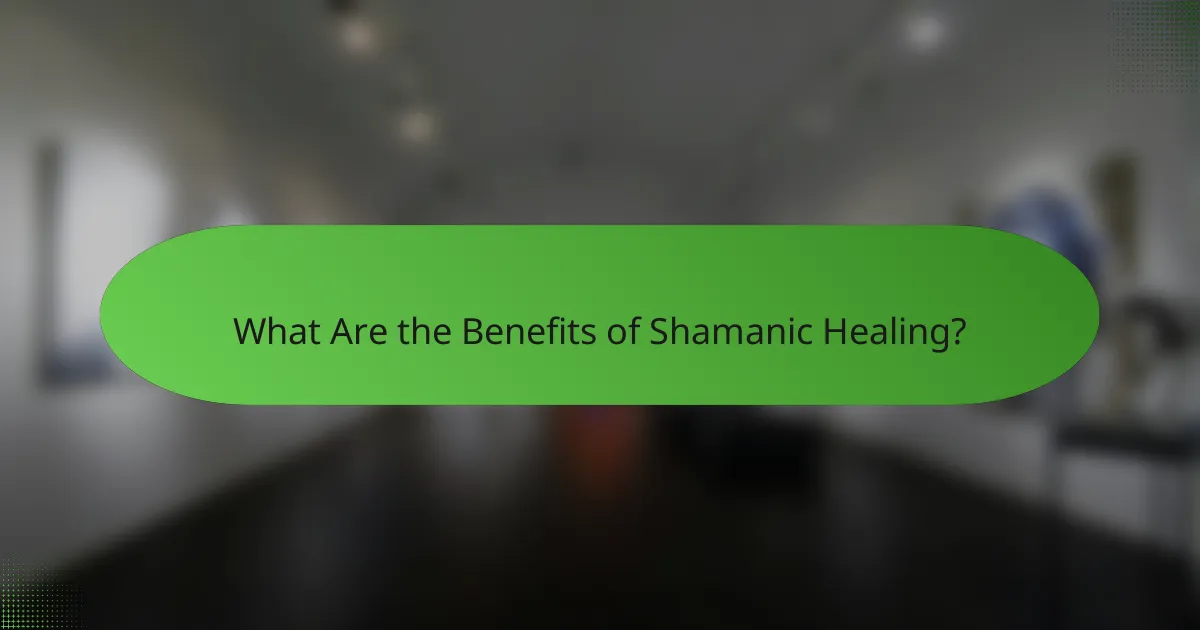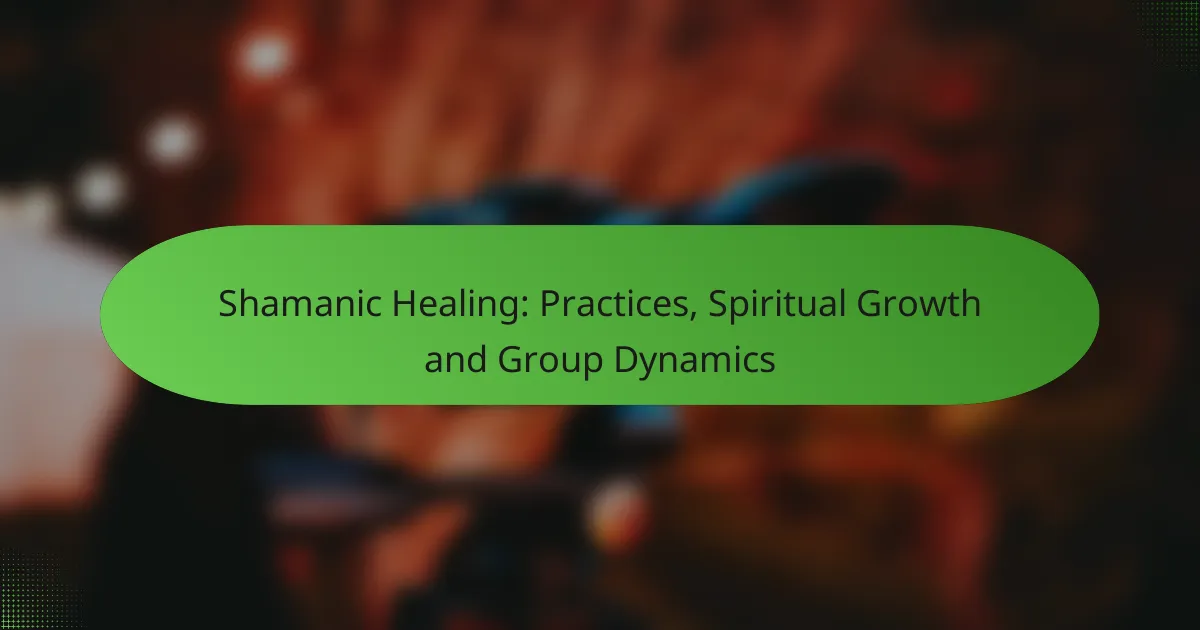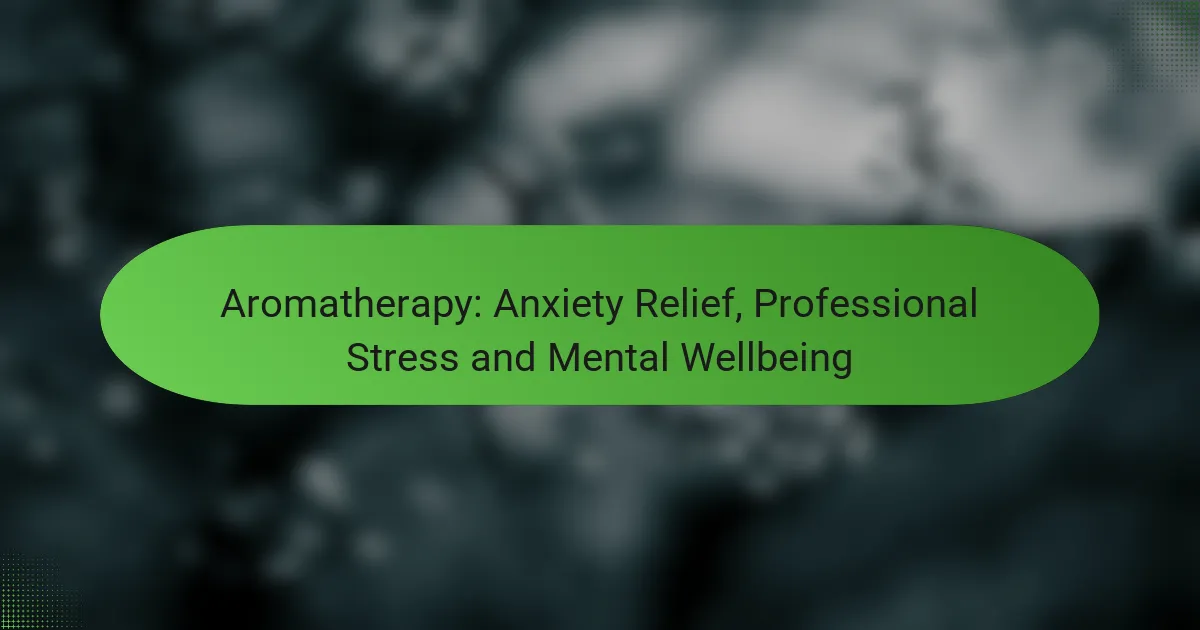Shamanic healing is a transformative practice that connects individuals with spiritual realms to facilitate personal growth and healing. Through techniques such as journeying, drumming, and rituals, participants explore their inner selves and heal emotional wounds, fostering a deeper understanding of their connection to the community. The dynamics within group sessions play a crucial role in shaping the healing experience, influencing both individual and collective outcomes.

What Are the Key Practices in Shamanic Healing?
Shamanic healing involves various practices that connect individuals with spiritual realms for personal transformation and healing. Key practices include journeying, plant medicine use, drumming and sound healing, rituals and ceremonies, and energy work.
Journeying
Journeying is a core practice in shamanic healing where practitioners enter altered states of consciousness to connect with spiritual guides and gain insights. This often involves visualization techniques and can be facilitated by rhythmic drumming or other sounds.
To begin journeying, find a quiet space, set a clear intention, and use a drum or rattle to help maintain focus. It is essential to remain open to the experiences that arise during the journey, as they can provide valuable guidance.
Plant Medicine Use
Plant medicine use in shamanic healing typically involves the consumption of natural substances like ayahuasca or peyote to facilitate deep healing experiences. These plants are believed to open pathways to spiritual insights and emotional release.
When considering plant medicine, it is crucial to approach it with respect and caution. Engaging with experienced practitioners and understanding the legal status of these substances in your country is vital for safe experiences.
Drumming and Sound Healing
Drumming and sound healing are integral to shamanic practices, as they create a rhythmic foundation that helps induce trance states. The repetitive beats of a drum can facilitate deep relaxation and connection to the spiritual realm.
Using various instruments, such as singing bowls or rattles, can enhance the healing experience. Practitioners often incorporate these sounds into ceremonies to promote healing and transformation.
Rituals and Ceremonies
Rituals and ceremonies in shamanic healing serve to create sacred space and invite spiritual energies for healing purposes. These practices can vary widely but often include offerings, prayers, and communal participation.
Participating in group ceremonies can amplify the healing effects, as collective energy fosters a deeper connection. It is essential to approach these rituals with respect and understanding of their cultural significance.
Energy Work
Energy work in shamanic healing focuses on balancing and clearing the body’s energy fields to promote physical and emotional well-being. Techniques may include hands-on healing, aura cleansing, and chakra balancing.
Practitioners often use visualization and intention to direct healing energy. Regular energy work can help maintain emotional balance and enhance overall health, making it a valuable practice for personal growth.

How Does Shamanic Healing Facilitate Spiritual Growth?
Shamanic healing promotes spiritual growth by enabling individuals to explore their inner selves, heal emotional wounds, and connect with higher realms of consciousness. This transformative process often leads to greater self-awareness and a deeper understanding of one’s place within a community.
Enhances Self-Awareness
Shamanic practices encourage individuals to reflect on their thoughts, feelings, and behaviors, fostering a deeper understanding of themselves. Through techniques such as journeying and meditation, participants can gain insights into their life patterns and motivations.
Increased self-awareness can lead to more conscious decision-making and improved relationships. For example, recognizing personal triggers can help individuals respond more thoughtfully in challenging situations.
Promotes Emotional Healing
Shamanic healing addresses emotional pain by allowing individuals to confront and process unresolved issues. Techniques like soul retrieval and energy clearing can help release negative emotions and restore balance.
Participants often report feeling lighter and more at peace after sessions, as they let go of burdens that have held them back. This emotional healing can be crucial for personal growth and resilience.
Connects with Higher Consciousness
Shamanic healing facilitates a connection with higher consciousness, enabling individuals to access spiritual guidance and wisdom. This connection can be achieved through rituals, drumming, and altered states of consciousness.
By tapping into these higher realms, participants may receive insights that guide their life choices and enhance their spiritual journey. This connection often fosters a sense of purpose and belonging in the universe.
Fosters Community and Support
Engaging in shamanic healing often occurs in group settings, which fosters a sense of community and shared experience. Participants can support each other through their healing journeys, creating bonds that enhance personal growth.
Community involvement can also provide accountability and encouragement, making it easier to stay committed to spiritual practices. Sharing experiences within a supportive group can deepen understanding and facilitate healing for all involved.

What Are the Group Dynamics in Shamanic Healing Sessions?
Group dynamics in shamanic healing sessions involve the interactions and relationships among participants that influence the overall experience and effectiveness of the healing process. These dynamics can significantly impact individual and collective healing outcomes.
Shared Intentions
Shared intentions are crucial in shamanic healing sessions as they unify the group’s focus and energy towards a common goal. When participants articulate their intentions, it creates a supportive environment that enhances the healing process for everyone involved.
To foster shared intentions, participants can engage in a brief discussion before the session, allowing each member to express their personal goals. This practice not only aligns the group but also strengthens individual commitment to the healing journey.
Collective Energy
The collective energy generated during shamanic healing sessions plays a vital role in amplifying the healing effects. As participants connect emotionally and spiritually, their combined energy can create a powerful atmosphere conducive to transformation.
Practices such as group drumming or chanting can help elevate this collective energy. These activities encourage synchronization among participants, enhancing the overall experience and facilitating deeper healing states.
Facilitator Roles
Facilitators in shamanic healing sessions serve as guides, helping to navigate the group dynamics and maintain a safe space for exploration. Their role includes setting the tone, managing the flow of the session, and addressing any emotional needs that arise.
A skilled facilitator will also encourage participation while being attentive to individual comfort levels. This balance ensures that everyone feels supported and engaged throughout the process, which is essential for effective healing.
Conflict Resolution
Conflict resolution is an important aspect of maintaining harmony in shamanic healing sessions. Disagreements or discomfort can arise due to differing beliefs or emotional triggers, and addressing these issues promptly is crucial for the group’s well-being.
Facilitators should be prepared to mediate conflicts by encouraging open communication and fostering empathy among participants. Techniques such as active listening and validation can help resolve tensions, allowing the group to refocus on their shared healing intentions.

What Are the Benefits of Shamanic Healing?
Shamanic healing offers various benefits, including physical healing, mental clarity, spiritual connection, and community building. These practices can lead to holistic well-being by addressing the mind, body, and spirit in an integrated manner.
Physical Healing
Shamanic healing often involves techniques like energy work, herbal remedies, and ritualistic practices aimed at restoring physical health. Practitioners may use natural elements such as plants and minerals to support the body’s healing processes. Many individuals report improvements in chronic pain, fatigue, and other ailments after participating in shamanic sessions.
It’s important to approach physical healing with realistic expectations. While some may experience immediate relief, others might find gradual changes over time. Always consult with a healthcare professional for serious conditions before relying solely on shamanic practices.
Mental Clarity
Shamanic healing can enhance mental clarity by helping individuals release emotional blockages and negative thought patterns. Techniques such as guided journeys or drumming can facilitate deep introspection, allowing for greater self-awareness and focus. Participants often describe feeling more grounded and present after these experiences.
To maximize mental clarity, engage in regular shamanic practices and consider journaling your insights. This can help reinforce the lessons learned during sessions and provide a clearer path forward in daily life.
Spiritual Connection
One of the core benefits of shamanic healing is the deepened spiritual connection it fosters. Through rituals and ceremonies, individuals often feel a stronger bond with nature, their ancestors, and the universe. This connection can lead to a greater sense of purpose and fulfillment in life.
To enhance your spiritual journey, participate in group ceremonies or individual sessions that resonate with you. Exploring different traditions within shamanism can also provide unique insights and experiences that enrich your spiritual path.
Community Building
Shamanic healing often emphasizes the importance of community, as many practices are conducted in group settings. This fosters a sense of belonging and support among participants, which can be vital for personal growth. Sharing experiences and insights with others can create lasting bonds and a network of support.
To engage in community building, seek out local shamanic circles or workshops. Participating regularly can help you connect with like-minded individuals and deepen your understanding of shamanic practices while contributing to a supportive environment.

How to Choose a Shamanic Practitioner?
Choosing a shamanic practitioner involves assessing their qualifications, experience, and approach to healing. It’s essential to find someone whose methods resonate with you and who has a solid reputation in the community.
Qualifications and Experience
When evaluating a shamanic practitioner, consider their formal training and practical experience. Many practitioners undergo apprenticeships or training programs that can vary significantly in length and depth, often ranging from a few months to several years.
Look for practitioners who have completed recognized programs or have been mentored by established shamans. Experience in various healing modalities, such as energy work or herbal medicine, can also enhance their effectiveness.
Ask about their specific areas of expertise, as some may focus on trauma healing, spiritual guidance, or community rituals. Personal recommendations and online reviews can provide insight into their reputation and the experiences of others.



